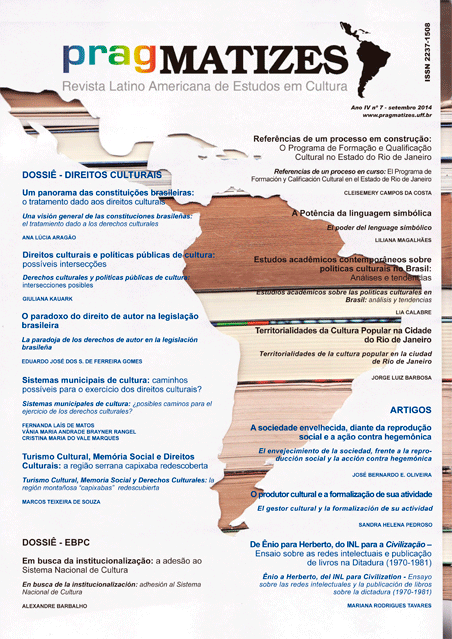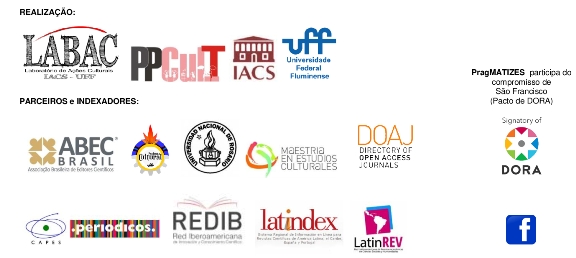The power of symbolic language
DOI:
https://doi.org/10.22409/pragmatizes.v0i7.10391Abstract
The relationship between the advancement of the role of cultural institutions in the country, specifically the cultural centers and museums, and the maturing of practical cultural management is approached from the question of how these practices have been developed to enable the creative arrangements and local development. From an insight into the impact of investor mentality -its purposes and objectives- in the production processes of cultural initiatives in the last 20 years, the article awakens to the strategic power of culture and its symbolic value in the knowledge society facing the challenge being in tune with the social transformations. When citing models that were pointing to new trends, warns about the urgency of clearer definitions for the roles, functions and objectives of management models now in vogue and the consequent need for creating specific methodologies that can be able to promote an attitude to development of the creative economy sector. Characterizes the trading currencies between investor interest and the delivery results of cultural management until now and alert to the tendency of the interests of transformers agents and entrepreneurs today and also shows the examples how the qualities and skills of culture can respond to this demand in connection with other sectors of society. Then presents a concept of entrepreneurial management culture and describes about the implementation of a cultural institution that has your goals focused on promoting innovation from the town itself –based on ethical principles- resulting in permanent study and research of the artistic-cultural environment and in line with the behavioral tendencies, market, consume, media and community. Presents the sequence of steps necessary to a proper and legitimate role of the third sector institutions to be a change agent. The multiple intersections between the social actors allows us to understand the multiplier power of a partnership management model that was adopted and also exemplifies how a exhibition of electronic art can be much more than an initiative of displaying a cultural project, can be a conductor thread of a cultural movement of integration and creative arrangements. The dynamics of development is presented with a focus on new mind set created with the methodologies for managing initiative in order to match the characteristics of the production of contemporary art. The results of the initiatives undertaken with the various productive sectors are described as well as its impacts innovation. Finally, a reflexion discussion is done about the importance of creating new standards and management methods through an attitude that potentiates the transforming power of culture.Downloads
References
ANA MAE BARBOSA, Lilian Amaral (organizadoras) Interterritorialidade: mídia, contextos e educação. São Paulo: Editora SENAC, Edições SESC SP 2008 P.23
GILLES LIPOVETSKY, (autor) Tempos Modernos. Brasil Editora Barcarolla 2004
MAGALHÃES, Liliana. Marketing Cultural: O que é que eu ganho com isso. IN:
CRIBARI, Isabela/ FONSECA REIS, Ana Carla (org.) Economia da Cultura Recife: Fundação Joaquim Nabuco Editora Massangana 2009. P.231-242
Downloads
Published
How to Cite
Issue
Section
License
By forwarding an original to PragMATIZES, the authors agree that the copyright related to it is transferred to the Publishing. Articles and other writings are made available in PDF format from their publication, and they can be downloaded to institutional repositories and personal pages, provided that with their proper bibliographic indication.



